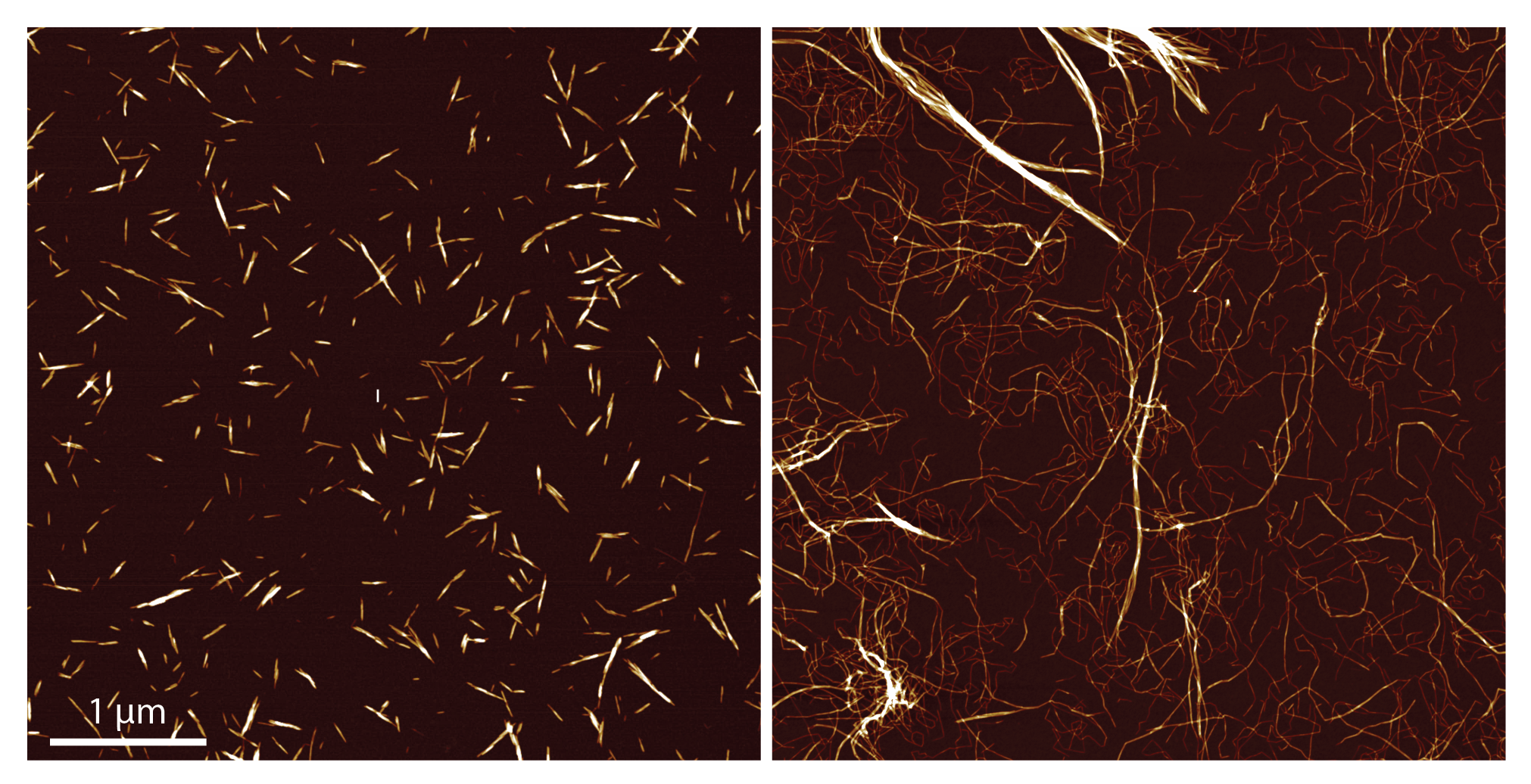Cellulose Biohybrid Materials
Many materials in nature inherit their impressive functionalities from a synergistic combination of cellulose with other organic or inorganic materials. Our work in this area aims to develop the tools and the fundamental understanding that allow us to engineer biohybrid cellulose materials with properties that significantly enhance the functionalities of traditional cellulose materials. One specific research focus is the combination of cellulose with proteins. By using carefully synthesized colloidal nanocellulose particles, Cellulose Nanocrystals and Cellulose Nanofibrils, together with monomeric or aggregated proteins we are studying their supramolecular interactions and colloidal co-assembly into functional materials in the form of e.g. composite films, foams, hydrogels and aerogels. Another research focus is the electrostatically and entropically driven assembly of nanocellulose with conductive nanomaterials, e.g. silver nanowires, carbon nanotubes and MXene nanosheets, into hybrid materials with tunable electronic and optical properties. This work contributes to an improved understanding of bottom-up fabrication of cellulose-based materials and the applications that we target include food packaging, antimicrobial materials and lightweight multifunctional composites.

Selected publications
Self-Assembly Pathways and Antimicrobial Properties of Lysozyme in Different Aggregation States. Nico Kummer et al. Biomacromolecules, 22(10): 4327-4336 (2021).
Functional Materials from Nanocellulose: Utilizing Structure–Property Relationships in Bottom-Up Fabrication. Kevin De France et al. Advanced Materials, 33: 2000657 (2021).
Nanocellulose-lysozyme colloidal gels via electrostatic complexation. Tingting Wu et al. Carbohydrate Polymers, 251: 117021 (2021).
Assembly of Cellulose Nanocrystal–Lysozyme Composite Films with Varied Lysozyme Morphology. Kevin De France et al, Biomacromolecules, 21(12): 5139-5147 (2020).
Ultralight, Flexible, and Biomimetic Nanocellulose/Silver Nanowire Aerogels for Electromagnetic Interference Shielding. Zhihui Zeng et al, ACS Nano, 14(3): 2927-2938 (2020).
Structure–property relationships of cellulose nanofibril hydro-and aerogels and their building blocks. Mario Arcari et al, Nanoscale, 12: 11638–11646 (2020).
Dual-porous cellulose nanofibril aerogels via modular drying and cross-linking. Tingting Wu et al, Nanoscale, 13: 7383–7394 (2020).
Reports in media
The world’s lightest shielding material. Empa Press Release
The lightest shielding material in the world. Science Daily
Aerogel fashioned into world's lightest electromagnetic shielding. New Atlas
Related projects
Functional Nanocellulose-Amyloid Biocomposites – SNF (2020-2024)
Wood Wound Healing – BAFU Aktionsplan Holz (2021-2023)


